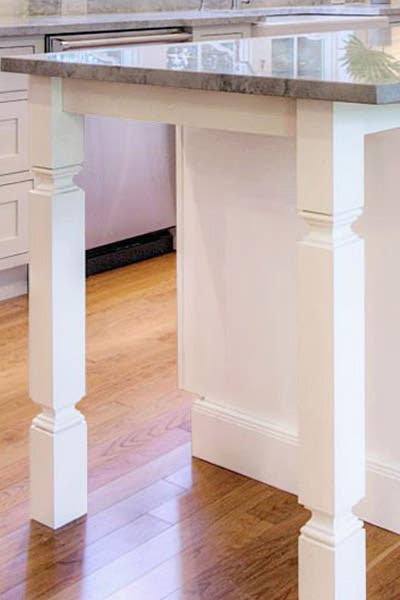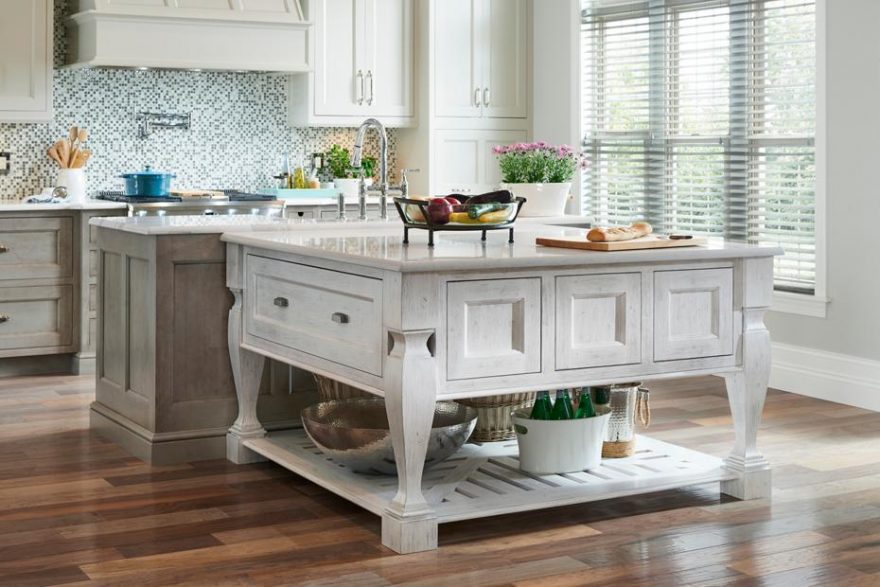Explore Timeless Options in Classic Legs For Kitchen Island Styles
Explore Timeless Options in Classic Legs For Kitchen Island Styles
Blog Article
Vital Elements to Consider When Selecting Legs For Kitchen Island
Picking the proper legs for a kitchen island includes a mindful evaluation of numerous elements that can dramatically influence both performance and visual charm. As we discover these elements, it ends up being clear that each choice can have far-reaching ramifications for the total kitchen area experience.
Product Options
When picking legs for a kitchen area island, recognizing the numerous material choices is crucial for achieving both visual allure and structural stability (Legs For Kitchen Island). The option of product significantly influences not just the resilience of the island but also its general layout and capability
Wood is a popular option, using heat and convenience. Solid hardwoods, such as oak or maple, offer stamina and can be tarnished or repainted to match the cooking area decor. Metal legs, typically made from stainless-steel or functioned iron, add a commercial and modern-day feeling while making certain durability and stability. These materials are resistant to wear and can support substantial weight, making them perfect for larger islands.
An additional alternative is crafted materials, like MDF or plywood, which can be more economical while still supplying a series of finishes. Nonetheless, they might not supply the very same degree of security as strong timber or metal. Finally, materials such as acrylic or glass can produce a modern appearance, though they may call for additional support to guarantee security.
Ultimately, the option of product for cooking area island legs must line up with the desired capability and the total motif of the kitchen area.
Design and Design

When considering style, the shape and finish of the legs are important. Conical legs can offer a feeling of lightness and style, while thicker, extra robust legs can convey stamina and security. Furthermore, the finish-- be it painted, tarnished, or all-natural-- need to match the kitchen cabinetry and kitchen counter products to develop a unified look.
Moreover, the layout of the legs can additionally mirror individual taste. Customized or decorative legs, such as those featuring intricate makings or special geometric forms, can function as focal points, adding personality and character to the kitchen area. Ultimately, the right selection will certainly not only enhance capability however likewise elevate the visual charm, making the kitchen island a standout attribute of the home.
Elevation Considerations
Choosing the ideal height for kitchen island legs is critical, as it straight impacts both capability and convenience. The basic elevation for a kitchen area island usually ranges from 36 to 42 inches, lining up with common kitchen counter elevations. A 36-inch elevation is suitable for food preparation and cooking, permitting for comfortable use of kitchen home appliances and tools. Alternatively, a height of 42 inches is usually liked for islands additional info intended for bar seats, accommodating taller feceses and using a laid-back eating experience.

It is likewise necessary to account for users' heights and choices. Customizing the elevation can ensure a comfortable experience for all member of the family, making the kitchen island an extra delightful and useful area.
Weight Support
Making certain appropriate weight support for kitchen area island legs is important for both safety and security and performance. The cooking area island commonly serves numerous purposes, consisting of food preparation, eating, and additional storage, demanding a robust assistance structure. When choosing legs, it is crucial to think about the overall weight capability called for based on the island's meant usage and the materials that will certainly be positioned on it.
The choice of product for the legs plays a significant function in their weight-bearing capacities. Solid wood, steel, and sturdy composites normally give exceptional stamina contrasted to lighter materials. Furthermore, the style of the legs-- whether they are right, tapered, or have a pedestal form-- can affect their capability to disperse weight properly across the structure.
Always consult the producer's specifications concerning load limits to ensure that the legs can sustain the desired weight without endangering safety and security. In recap, choosing kitchen island legs with adequate weight support is essential for developing a secure and practical culinary room.
Installment and Upkeep
Appropriate setup and maintenance of cooking area island legs are vital for ensuring durability and stability. This commonly involves safeguarding the legs to the island base using ideal fasteners, making certain that the legs are level and straightened.
Once set up, regular upkeep is necessary to protect the honesty and appearance of the legs - Legs For Kitchen Island. For wood legs, periodic cleaning with a wet cloth and application of appropriate timber polish can stop dampness damage and preserve their coating. Metal legs might call for a gentle cleaning remedy to remove grease and crud, followed by a dry fabric link to stop rust formation
Furthermore, check the legs regularly for signs of wear or damage, such as fractures or loosened joints. Tightening up screws or screws as required can additionally lengthen the life-span of the legs. By adhering to these installation and maintenance practices, property owners can make certain that their cooking area island continues to be sturdy and aesthetically appealing for years ahead.
Verdict

Visual coherence is critical in picking the design and layout of legs for a kitchen island, as these aspects considerably affect the total setting of the space. Tapered legs can offer a sense of lightness and sophistication, while thicker, extra durable legs can share toughness and security.Choosing the appropriate height for cooking area island legs is vital, as it directly impacts both performance and comfort. In summary, choosing kitchen island legs with appropriate weight support is important for producing a safe and practical cooking area.
In final thought, selecting legs for a kitchen area island requires mindful factor to consider of different variables, including product options, design, height, weight assistance, and setup.
Report this page